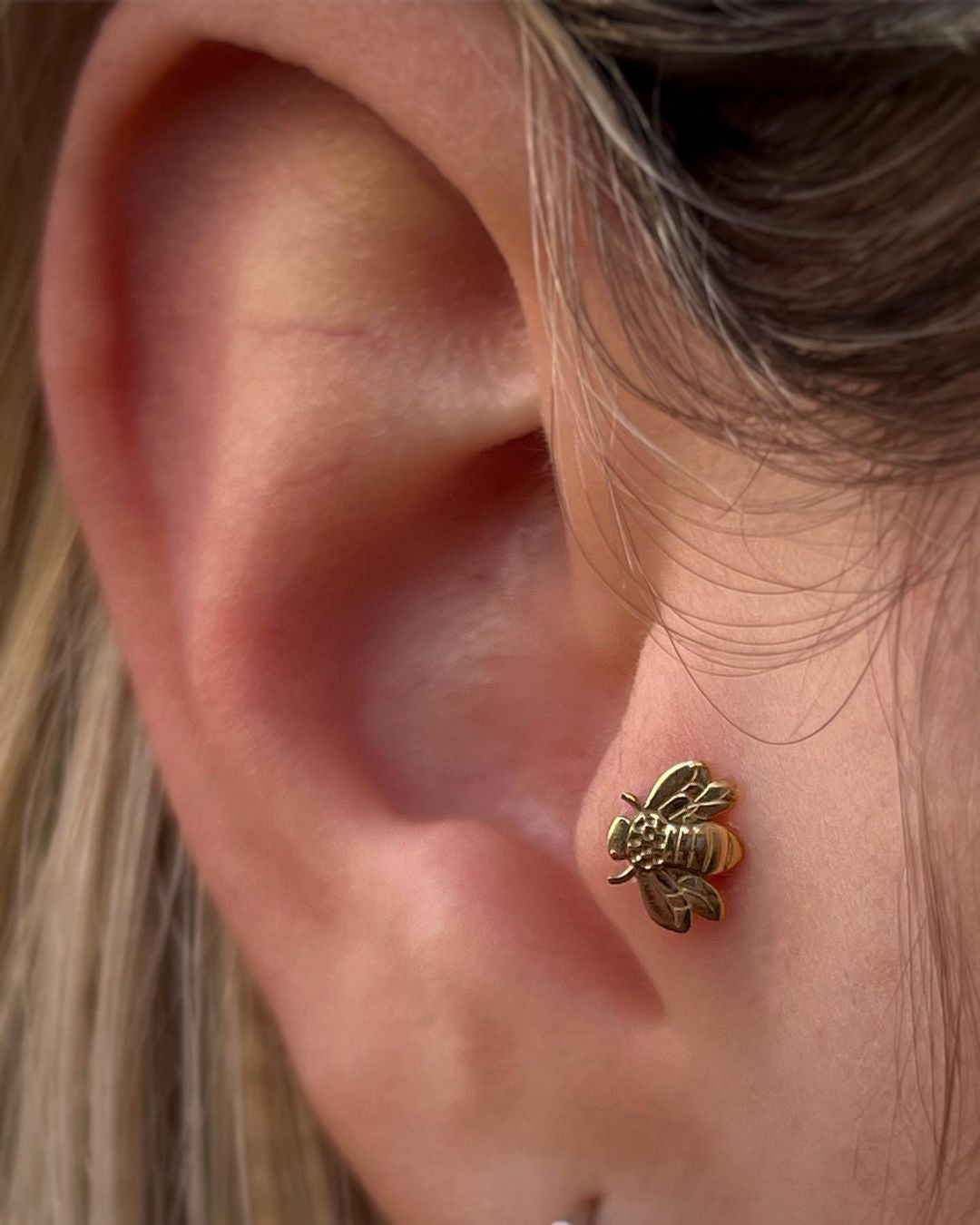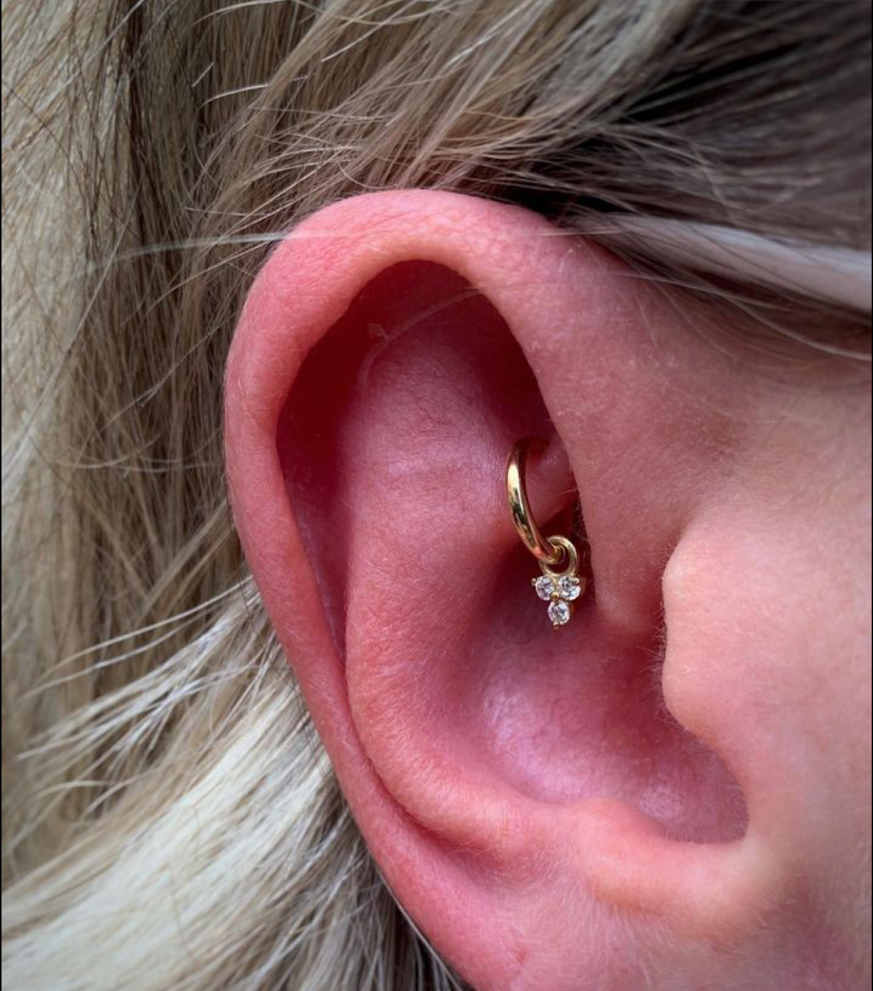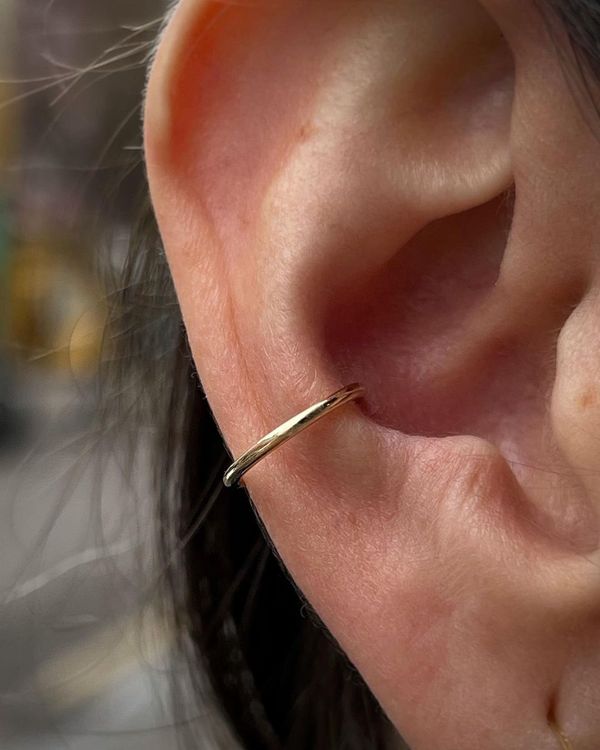At Smiley Dogg Tattoo, the piercing process is a meticulous and professional experience, ensuring both precision and hygiene. Our skilled piercers prioritise client comfort and safety throughout the procedure.
Professional Piercing in Cork | Safe & Stylish Piercings at Smiley Dogg
Experience precision, safety, and style with expert piercers and the highest quality jewellery for a piercing you’ll love for life.
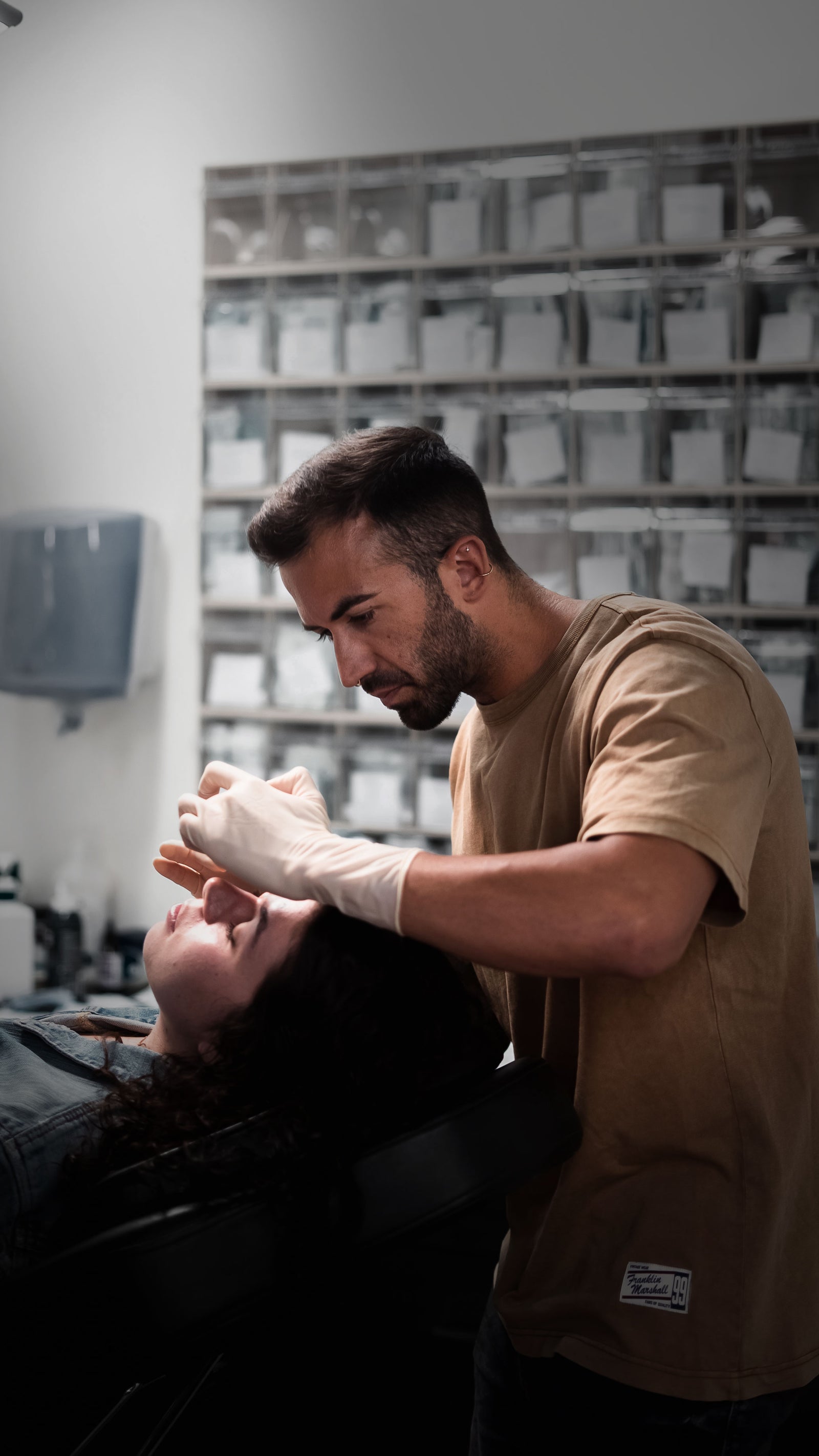
Before starting, a thorough consultation takes place, allowing clients to discuss their preferences and concerns. Sterile, single-use equipment is employed for each piercing to maintain the highest standards of cleanliness. The piercing area is carefully marked, and the procedure is executed with expertise, minimising discomfort. Post-piercing care instructions are provided to guide clients through the healing process, emphasising proper aftercare for optimal results. The team at Smiley Dogg Tattoo is committed to delivering not only aesthetically pleasing piercings but also a safe and positive experience for every client.
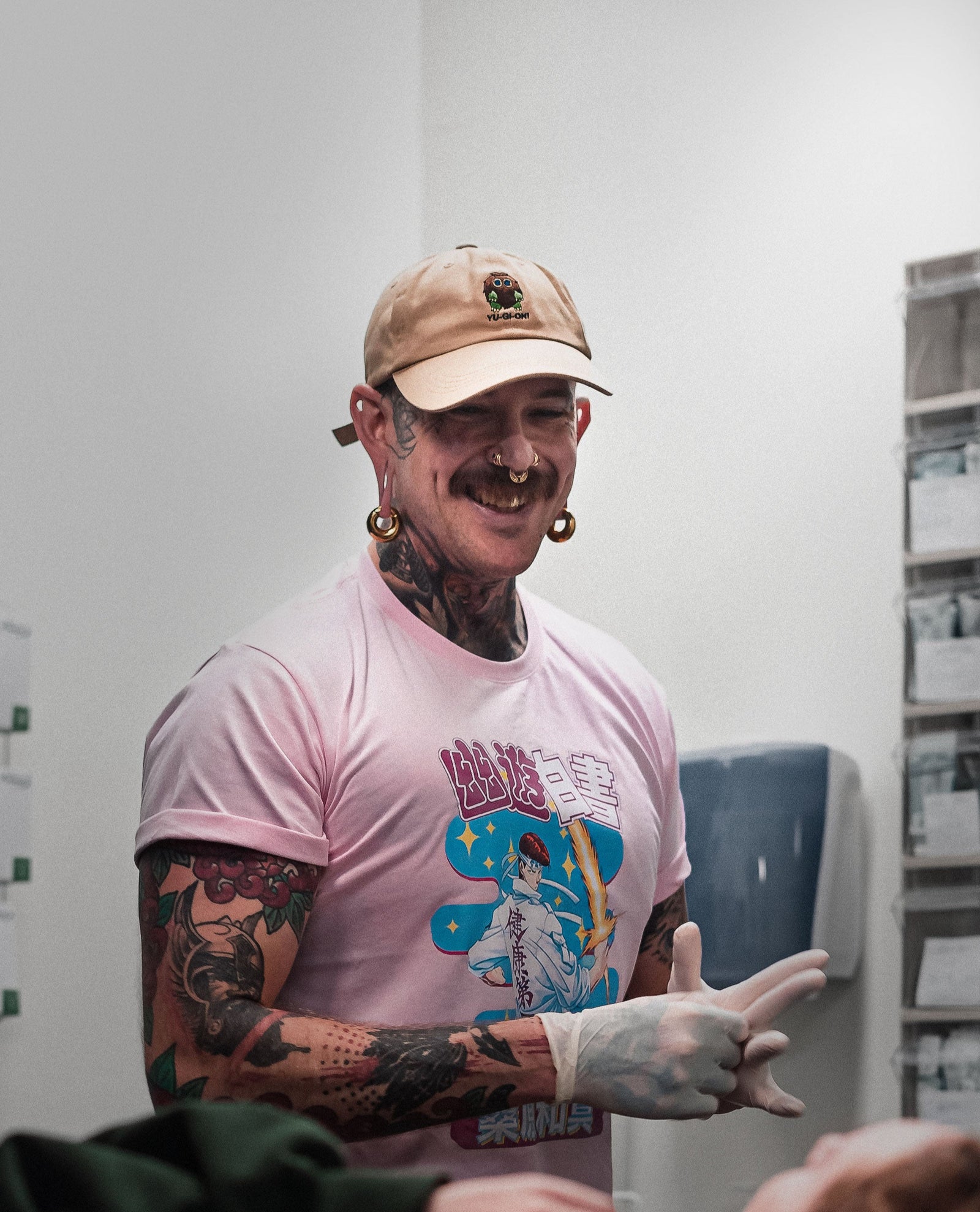
Inspired by You, Designed by Us
Browse styles that speak your story, from bold to minimal
Choose your favourite
Meet the Piercers
- Rated ★★★★★ by Our Clients
- Rated ★★★★★ by Our Clients
- Rated ★★★★★ by Our Clients
- Rated ★★★★★ by Our Clients
- Rated ★★★★★ by Our Clients
Piercing FAQs
We require 48 hours to cancel or reschedule a piercing appointment. You must contact us by phone to do so. If we do not receive notification 48 hours prior to your appointment, you will forfeit your deposit and a new one will be required going forward.
Once deposit is paid, all cancellations are subject to a partial refund of 80% of the full amount paid.
If you cancel an appointment that you've already rescheduled in the past, you will forfeit 100% of deposit paid.
- Expect initial bleeding and localised swelling, with potential tenderness and bruising in the pierced area.
- Do not be alarmed by discoloration, itching, or the release of whitish-yellow fluid (not pus) during the healing process; these are normal occurrences.
- The tissue may tighten around the jewellery as part of the healing process.
- While a piercing may appear fully healed externally during the healing process, the interior remains unhealed and fragile, emphasising the need for patience and consistent cleaning.
- Failure to include piercing cleaning in your daily hygiene routine may result in the accumulation of normal but odorous secretions in the area.
- The general healing process typically takes around 2 months, but individual variations may lead to different timeframes for each person.
- Once healed, be cautious as the jewellery may not move freely in the piercing; avoid forcing it.
- Keep in mind that even piercings considered fully healed can shrink or close within minutes, even after years of being in place.
We provide a wide range of piercing options (refer to the list on the link). However, not every piercing may be suitable for everyone, as it often depends on individual anatomy. If you have a specific piercing in mind, feel free to visit our shop, and our experienced piercer will assess your anatomy to determine the most suitable options for you.
At Smiley Dogg we pierce exclusively with implant-grade titanium (ASTM F136) as our standard.
It gives the safest heal, zero plating, zero irritation, and it’s included in the piercing price.
Alternatively, we offer solid 14k gold pieces for those who want a more premium look.
These are high-end threadless jewellery options designed for professional piercing only.
Gold pieces come with an additional charge.
The final price depends on the design you choose on the day.
Yes. We provide 14k or 18k rings and studs, offering some of the finest jewellery brands approved by all piercing boards.
We exclusively utilise implant-grade titanium, and we also offer nickel-free Gold options in both 14k and 18k, both of which are optimal for the healing process.
If you have any concerns about your piercing, please reach out to us immediately and call or visit our studio. It is crucial that our piercer assesses the situation if you have any uncertainties.
While in most instances, you can, however it’s advisable to visit our shop so our piercer can examine it. If it's a recent piercing that you removed, and it has just closed up, it is recommended to wait at least four weeks before considering a re-piercing.
Certainly, there is a possibility. Infections in piercings often arise when individuals fail to adhere to the provided aftercare instructions. Our piercer will provide an explanation and guide you through the aftercare during your initial session. Additionally, we automatically send aftercare information via email upon completion of our Consent Form/Waiver.
Exclusively employing needle blades, we strongly discourage the use of piercing guns. Opting for a piercing needle is the superior choice for several reasons. Needles offer greater cleanliness, precision, and reduced discomfort compared to guns. Moreover, the healing process tends to be more effective when a needle is utilised.
Our needles are designed for single-use only. Each day, all jewellery, needle blades, and tools undergo sterilisation and are individually packaged.
While our piercer will provide specific healing time guidance for your particular piercing, it's important to note that the process can vary from person to person. Changing your jewellery before your piercing has fully healed may potentially reopen the wound, impacting the healing process. This necessitates a more vigilant adherence to aftercare to prevent potential infections. Even with careful handling, changing the jewellery can still irritate the new piercing. If you are determined to switch your jewellery, we recommend waiting until the piercing is no longer tender to the touch.
We have specific age requirements for piercings in our studio, as outlined below:
- Lobe Piercings: Minimum age requirement is 12 years.
- Nose, Tragus, and Helix Piercings: Minimum age requirement is 14 years.
- Eyebrow, Belly Button, Tongue, Flat, Daith, Industrial, and Septum Piercings: Minimum age requirement is 16 years.
If you are under 18 and interested in any of these piercings, a parent or legal guardian must accompany you to the shop to provide consent.
We maintain a strict 18+ policy for the following services: nipple piercings, dermals, surface piercings, bridge piercings, and tooth gems. These services are not available to anyone under 18, even with parental or legal guardian consent.
Our exclusive selection comprises implant-grade titanium, ensuring the highest quality. Additionally, we offer nickel-free Gold alternatives in both 14k and 18k, both of which are optimal choices for the healing process.











